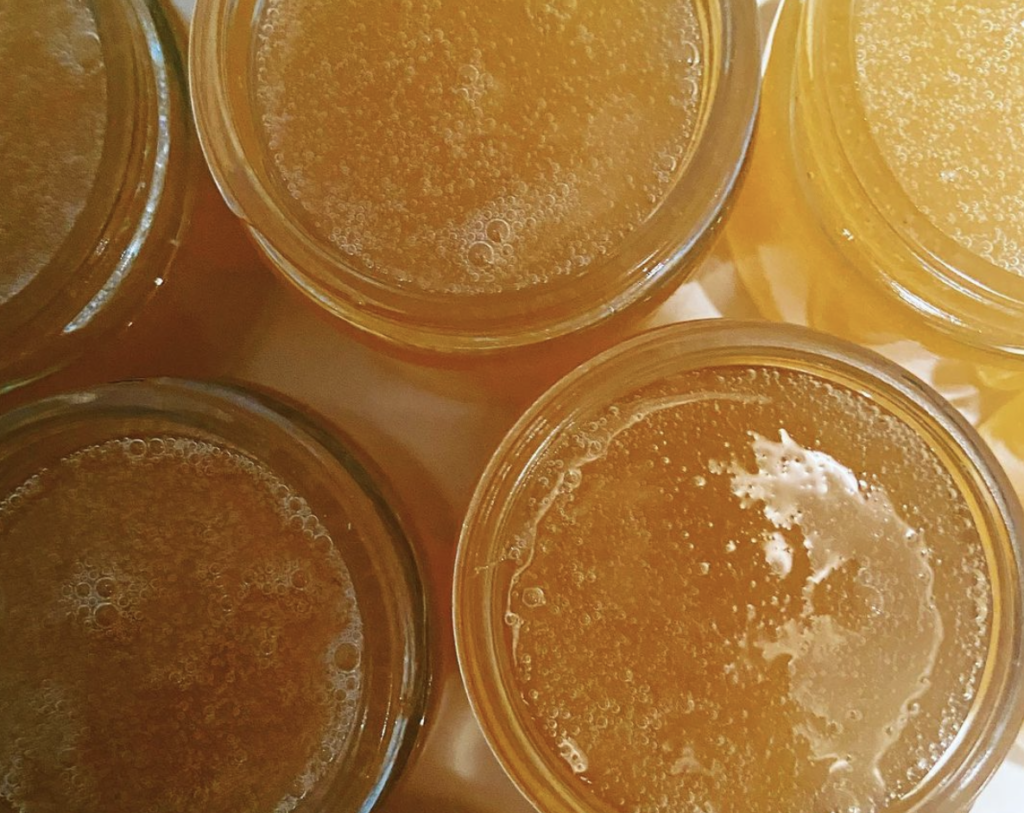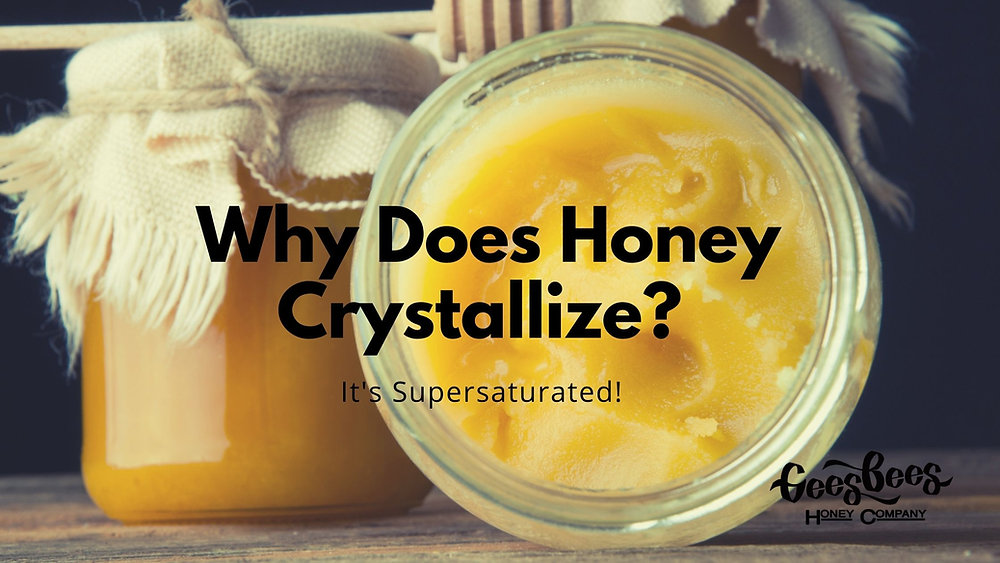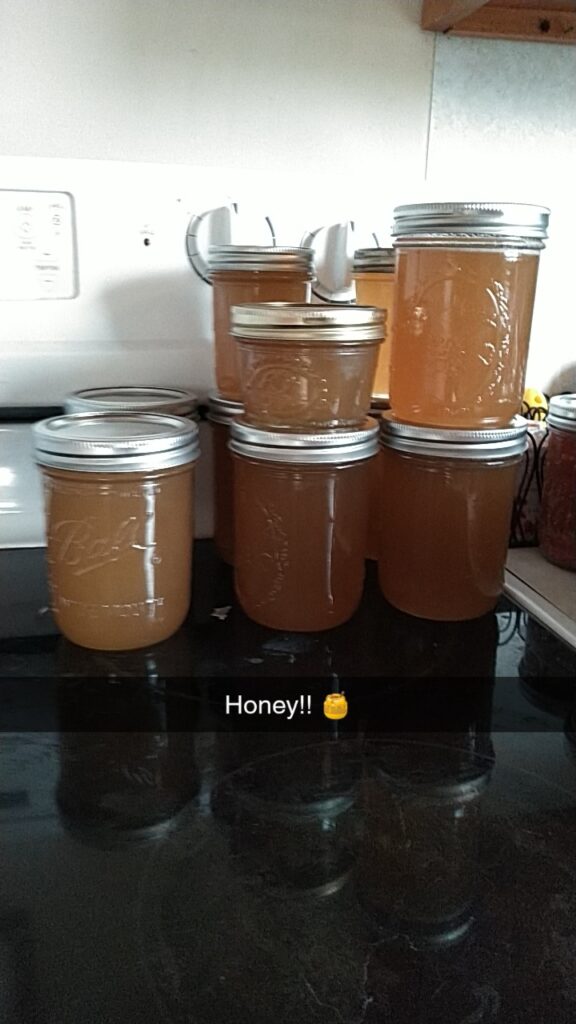
Have you ever opened your pantry to find that your beloved jar of honey has turned into a solid mass? Don’t worry, you’re not alone! In this article, we will explore the reasons behind why honey crystallizes and share some helpful tips on how to return it to its smooth, liquid state. From understanding the science behind the process to simple techniques for re-liquifying your honey, we’ve got you covered. So, grab a spoon and get ready to learn all about why your honey turned solid and how to get it liquid again!
Causes of Solidified Honey
Temperature
The temperature of your honey can have a significant impact on its consistency. Honey tends to solidify or crystallize when it is stored in colder temperatures. This is a natural process and can occur even with high-quality honey. When honey is stored at temperatures below 50°F (10°C), the glucose in the honey molecules forms crystals, causing the honey to solidify.
Crystallization
Crystallization is another common cause of solidified honey. Honey is a supersaturated solution, meaning it contains more sugar than it can dissolve. Over time, the excess sugar molecules in the honey will begin to form crystals. This process is known as crystallization. While crystallization does not affect the taste or nutritional value of the honey, it does cause the honey to become solid.
Moisture content
The moisture content of honey can also play a role in its solidification. Honey with a higher moisture content is more likely to solidify faster than honey with a lower moisture content. The ideal moisture content for honey is between 17% and 18%. If the honey has a moisture content higher than this, it may solidify quicker.
Sugar composition
The composition of the sugars present in the honey can affect its tendency to solidify. Honey with a higher glucose content is more likely to solidify compared to honey with a higher fructose content. Glucose molecules are more prone to forming crystals, resulting in solidified honey.
Storage conditions
The way honey is stored can also impact its solidification. Exposing honey to air, moisture, or fluctuations in temperature can accelerate the crystallization process. It is important to store honey in a cool, dry place, away from direct sunlight and extreme temperature changes. Keeping honey in an airtight container can help preserve its liquid state for a longer period of time.
Effects of Solidified Honey
Inconvenience in usage
Solidified honey can be inconvenient to use, especially if you prefer to drizzle it over your food or beverages. The viscosity of solidified honey makes it difficult to pour or spread, making it less practical for certain applications.
Altered texture and appearance
Solidified honey has a different texture and appearance compared to liquid honey. It becomes thick and grainy, which may not be desirable for some individuals. The crystals within the honey give it a cloudy or opaque appearance, which is a stark contrast to the clear, liquid form of fresh honey.
Difficulty in measuring quantities
When honey solidifies, it becomes challenging to measure precise quantities. Unlike liquid honey, which easily flows and can be poured or measured with precision, solid honey requires scraping or scooping, which can result in inconsistent measurements.

Understanding Honey Crystallization
Crystallization process
Honey crystallization is a natural and reversible process. When honey solidifies, it forms microscopic sugar crystals. These crystals are held together by the remaining liquid honey, giving the honey its solid consistency. The rate at which honey crystallizes can vary depending on its composition and storage conditions.
Factors affecting crystallization
Several factors can influence the crystallization of honey. As mentioned earlier, temperature plays a significant role. Lower temperatures promote crystallization, while higher temperatures delay the process. The sugar composition and moisture content of the honey also contribute to its crystallization tendencies.
Different types of honey crystals
Honey can form different types of crystals, each with its own characteristics. Fine-grained crystals create a smooth, creamy texture, while larger crystals result in a coarse and grainy texture. The type of crystals formed can vary depending on the floral source of the honey, the sugar composition, and the speed at which the honey crystallizes.
Methods to Liquidize Solid Honey
Gentle heat method
One of the simplest ways to liquefy solid honey is by gently heating it. Place the jar of solid honey in a bowl of warm water and let it sit for a few minutes. The heat from the water will gradually warm the honey and melt the crystals, restoring it to its liquid state. It is important to avoid using high heat, as excessive temperature can damage the beneficial enzymes and antioxidants in the honey.
Hot water bath method
Similar to the gentle heat method, the hot water bath method involves immersing the container of solid honey in a larger container filled with hot water. The hot water will gradually warm the honey and dissolve the crystals. Be careful not to overheat the water, as excessive heat can alter the taste and quality of the honey.
Microwave method
If you need to quickly liquefy a small amount of solid honey, the microwave method can be used. Transfer the solid honey to a microwave-safe container and heat it in short intervals, stirring in between. The microwave should be set to a low power setting to prevent overheating. Always monitor the honey closely to prevent it from boiling or scorching.
Warm oven method
The warm oven method is suitable for larger quantities of solid honey. Preheat your oven to the lowest temperature setting, usually around 150°F (65°C). Place the jar or container of solid honey in the oven and leave it for approximately 30 minutes to an hour. Keep a close eye on the honey to ensure it does not get too hot or boil.
Blending or stirring method
For honey that has only partially solidified or contains larger crystals, blending or stirring can be an effective method to restore its liquid consistency. Use a blender or hand mixer to gently blend the solid honey until it becomes smooth and liquid. Alternatively, you can vigorously stir the honey using a spoon or whisk until the crystals dissolve and the honey becomes liquid again.
Creaming method
If you prefer a creamy and spreadable consistency for your honey, the creaming method can be used. Creamed honey, also known as whipped honey, is made by gently heating and stirring liquid honey until it reaches a specific temperature and consistency. This process helps to control the size of the crystals and create a smooth, creamy texture.

Preventing Honey Crystallization
Storage in proper containers
Choosing the right container for storing honey is crucial in preventing or slowing down the crystallization process. Opt for glass jars or food-grade plastic containers with airtight lids. Avoid using metal containers, as they can react with the honey and affect its quality. Additionally, make sure the containers are clean and dry before transferring the honey.
Avoiding temperature fluctuations
To minimize the risk of honey crystallizing, it is important to store it in a stable environment with a consistent temperature. Fluctuations in temperature can hasten the crystallization process. Avoid storing honey in areas that are exposed to direct sunlight or extreme heat or cold.
Minimizing exposure to air
Air exposure can contribute to the solidification of honey. Always make sure the container is tightly sealed after each use to prevent air from entering. Oxygen in the air can react with the sugars in the honey and promote the crystallization process.
Choosing suitable honey types
Different types of honey have varying tendencies to crystallize. Some honey varieties crystallize faster than others due to their unique sugar composition. If you prefer liquid honey, opt for varieties like acacia, clover, or tupelo honey, as they have a lower glucose content and are less likely to crystallize quickly.
Additional Tips for Handling Honey
Using honey dippers or spoons
When extracting honey from the container, it is advisable to use honey dippers or spoons. These tools have a long handle with ridges or grooves, allowing you to collect and dispense honey smoothly without causing excessive agitation or mixing. Avoid using regular spoons, as they can introduce air and potentially accelerate crystallization.
Keeping honey away from water
Water can speed up the crystallization process, so it is important to keep honey away from moisture. Ensure that the honey container or jar is clean and dry before scooping out honey. Moisture can introduce impurities and promote the growth of mold or yeast.
Properly sealing honey containers
As mentioned earlier, tightly sealing honey containers is crucial in preventing air exposure. Ensure that the lid or cap of the container is securely fastened after each use. If the original container does not have a tight seal, consider transferring the honey to a more suitable airtight container.
Storing honey at an optimal temperature
To maintain the liquid consistency of honey, store it at an optimal temperature. The ideal temperature range for honey storage is between 50°F (10°C) and 70°F (21°C). Avoid storing honey in very hot or cold areas to minimize the risk of solidification.

Common Misconceptions about Solidified Honey
Honey spoilage myth
Contrary to popular belief, solidified honey does not indicate spoilage. Honey has a practically indefinite shelf life due to its low water content and acidic pH. The crystallization of honey is a natural and reversible process, and solidified honey can be easily liquefied using the methods mentioned above.
Significance of solidified honey
Solidified honey is not a sign of poor quality or impurity. In fact, it can be an indicator of raw and unprocessed honey. Many individuals prefer solidified honey for its unique texture and spreadability. It is important to understand that the solidification of honey does not affect its nutritional value or taste.
Nutritional value of solid honey
Solid honey retains its nutritional value even after crystallization. The vitamins, minerals, enzymes, and antioxidants present in honey remain unchanged. Whether in liquid or solid form, honey provides numerous health benefits and can be incorporated into various recipes and natural remedies.
Application of Solidified Honey
Baking
Solidified honey can be a great addition to baking recipes. It adds sweetness, moisture, and a subtle floral flavor to cakes, cookies, bread, and other baked goods. When using solid honey in baking, you may need to slightly warm it to achieve a more liquid consistency before incorporating it into the recipe.
Cooking
Solidified honey can be used in cooking as a natural sweetener and glaze for meats, vegetables, and sauces. By gently heating the solid honey until it becomes liquid, you can easily incorporate it into your favorite recipes. The unique flavor profile of solid honey can enhance the taste of savory dishes.
Spread for bread or toast
Solidified honey can be spread on bread, toast, or pancakes, similar to other spreads like butter or jam. Its creamy and smooth texture provides a delightful contrast to the bread. By spreading solid honey onto warm toast, you can experience the gradual liquefaction and enjoy the unique taste and texture.
Natural remedies
Solidified honey can also be used in natural remedies and home remedies. It has antibacterial and anti-inflammatory properties, making it useful for soothing sore throats, coughs, and wounds. By gently heating solid honey, you can create a DIY cough syrup or apply it topically to promote wound healing.

Alternative Uses for Solidified Honey
Exfoliating scrub
Solidified honey can be transformed into a gentle exfoliating scrub by mixing it with other natural ingredients. Combine solid honey with sugar, salt, or ground coffee to create a body or face scrub. The sugar or salt granules act as natural exfoliants, while the honey provides moisture and nutrients to the skin.
Moisturizing face mask
Solid honey can be applied as a hydrating face mask. By warming the honey until it becomes liquid and then allowing it to cool slightly, you can create a mask that can be spread evenly onto your face. Leave the mask on for 15-20 minutes and then rinse off with warm water. The honey will moisturize and nourish your skin, leaving it soft and radiant.
Hair conditioning treatment
Solidified honey can also be used as a natural hair conditioner. Mix the solid honey with warm water until it becomes liquid, and then apply it to your hair. Allow the honey to sit for 15-20 minutes before rinsing it out. The natural humectant properties of honey will lock in moisture and leave your hair soft, shiny, and manageable.
Conclusion
Solidified honey is a natural phenomenon that can occur due to temperature, crystallization, moisture content, sugar composition, and storage conditions. While it may cause inconvenience in usage and alter the texture and appearance of honey, there are various methods available to liquefy solid honey. Preventing honey crystallization can be achieved by storing it in proper containers, avoiding temperature fluctuations, minimizing exposure to air, and choosing suitable honey types. Solidified honey has various applications, ranging from baking and cooking to natural remedies and alternative uses for skincare and haircare. Remember that solidified honey does not indicate spoilage or loss of nutritional value. Embrace the unique qualities of solid honey, and explore the different ways it can enhance your culinary and self-care experiences.
